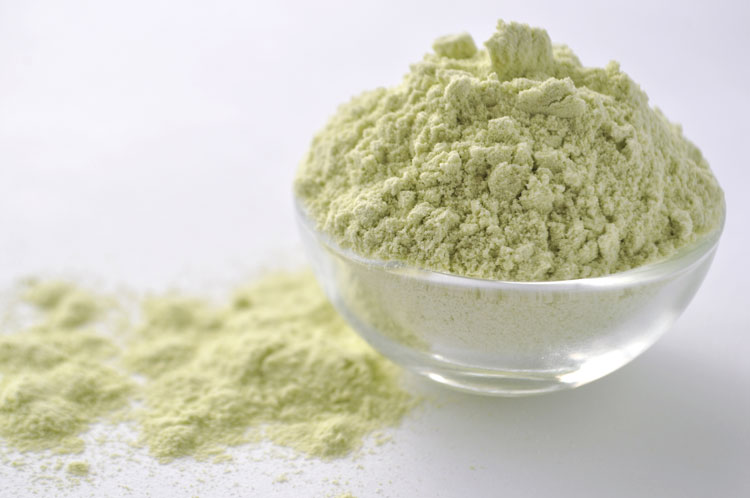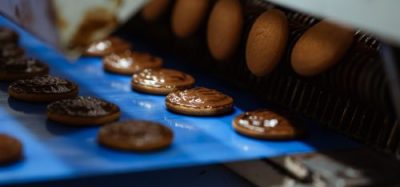Innovative approaches to old favourites
- Like
- Digg
- Del
- Tumblr
- VKontakte
- Buffer
- Love This
- Odnoklassniki
- Meneame
- Blogger
- Amazon
- Yahoo Mail
- Gmail
- AOL
- Newsvine
- HackerNews
- Evernote
- MySpace
- Mail.ru
- Viadeo
- Line
- Comments
- Yummly
- SMS
- Viber
- Telegram
- Subscribe
- Skype
- Facebook Messenger
- Kakao
- LiveJournal
- Yammer
- Edgar
- Fintel
- Mix
- Instapaper
- Copy Link
Posted: 20 November 2018 | Yogesh Sengar | No comments yet
In the confectionery and baking worlds, ingredients have been used in various combinations and mixes to achieve enhanced taste, resulting in several modifications within the market. Yogesh Sengar explains.


As key products within the processed food category, bakery products have acquired a place on daily, routine meal tables. The ingredients market has had to respond quickly to improvise around changing tastes. In response to consumer demand for healthier alternatives in bakery products, for instance, manufacturers are bringing healthier products to the table.
A winning streak in the emulsifier game
The production of high-quality baked goods requires best-in-class ingredients, in addition to improved baking techniques. Ingredients such as flour, flavourings and seasoning agents, enzymes, preservatives, emulsifiers, fats, and binding agents form the crux of the best bakery recipes. The processed and frozen foods markets have witnessed an increasing demand for products that cater to the quick, on-the-go lifestyles of next-generation consumers. This trend has predominantly given rise to a growing use of preservatives and emulsifiers that improve the quality of bakery goods selling on store shelves. Moreover, the addition of emulsifiers in bakery and confectionery products results in improved texture and an extended shelf-life.
Bakery emulsifiers are largely considered as a functional ingredient, used in preparing breads, cakes, and biscuits. Due to their ability to improve the texture and appeal of food products, emulsifiers already have a good hold on the market. With smooth textures and quality maintenance as priorities, the demand for emulsifiers is on a consistent rise. Shifting consumer preferences towards high-end innovative bakes and indulgent tastes has fuelled the necessity to achieve greater standards of flavour. Market players are experimenting with emulsifier innovations to go beyond the conventional methods of baking – achieving enhanced consumer satisfaction. Desired texture and crust are achieved by adding these crucial ingredients.
Gluten-free ingredients earn health standards for bakery products
Food technologists are on a constant quest to find new and improved solutions to meet the changing needs of consumers. Both the bakery and confectionery industries have stepped up their game of achieving healthier twists to established products, with the addition of functional ingredients and gluten-free alternatives to familiar favourites.
This concept was recognised by one of the leading European starch market players, Kroner-Starke. Its gluten-free wheat starch, Sanostar, is making the most of opportunities within a European bakery market that has seen massive demands for healthier gluten-free alternatives. With its functional properties and premium texture, mouth-feel and flavour, Sanostar’s baking characteristics are making it a popular choice among corn starches.
The ultimate healthy seasoning
A wide range of products fall within the functional ingredients category, improving the taste and texture of various food products. Binding agents including dairy products, starch, and yeast are a few common ones among them. One such functional ingredient that has gained popularity is legume flour, which has excellent solubility and water-binding ability, creating positive prospects for it in the gluten-free foods landscape.
Arla Foods Ingredients, which has built a reputation as a specialist in whey product development, has introduced a novel functional ingredient, Nutrilac, onto the market. This protein solution is an alternative to eggs, providing smooth texture and enrichment to the final product and it is gluten-free. It also helps retain air in the batter, with its excellent binding properties. This results, says Arla, in fluffy, high-volume sponge cakes that are a healthier alternative to those made with conventional ingredients.
‘Clean label’ rapidly becoming a growing necessity for consumers
Consumer-centric ‘clean labelling’ is the effort towards returning to real food products and authentic ingredients that possess no artificial additives or taste or texture enhancements. ‘Clean labelling’ of course sees a move away from chemical and synthesised products towards natural food ingredients.
With the consumer’s growing sophistication, manufacturers are finding it necessary to bring in innovations to cope with the emerging market trends and introduce differentiation within their product lines.


Legume flour is satisfying the demand for gluten-free products
Food ingredient companies are supporting this initiative, by innovating in terms of functional ingredients and improving in terms of quality – in case of both bakery and other food products. Ingredion, a global ingredients market player, is currently experimenting with healthy ingredients to support manufacturers. The company has been working to develop its portfolio of food ingredients to a level whereby it could transform raw materials, both within bakery and other food products. This has resulted in the growing production of functional starches, which are used to achieve texture.
A recent addition to this functional family includes a number of newly discovered functional flours possessing longer shelf life, containing modified starches and exhibiting stability that has set benchmarks within standards of ‘clean label’ products. These flours, in addition to improving the overall quality of bakery products, fulfil the ascending consumer demand for healthier foods and naturally sourced ingredients.
Bakery market baking the better-for-you trend
The ‘better-for-you’ nutrition trend is driving the shift for consumer preference towards healthier food products. Food products falling under the category of all-natural, organic, clean and protein-rich continue to make significant inroads into the market. Stores, supermarkets, bakeries and confectionery companies are replacing ingredients with healthier alternatives.
In bakery, sourdough is making the most of the better-for-you trend. The use of sourdough fermentation in baked food products is elevating at a high pace in the US. Over 552k tons of sourdough were sold in 2016 and the volume is estimated to reach over 975k tons in 2026. Its slow-fermentation process makes baked goods more nutritious and easier to digest. In addition to this, the better-for-you trend has been adopted extensively by those in-store bakeries (ISBs) that are offering ‘clean labelled’ food products in this category. ISBs are anticipated to grow massively in the couple of years ahead, according to Future Market Insights on the International Dairy-Deli-Bakery Association. Sales are projected to have risen by 45 percent since 2010, to reach approximately $18.4 billion by 2020.
ISBs are thus a promising segment when it comes to retail businesses, allowing bakers to engage and access more consumers. With the surging popularity of healthier snacks and bakery products, they offer an excellent opportunity to cater to those who might traditionally visit convenience stores and quick-serve outlets.
Innovation fuelling the bakery ingredients market
Spreading awareness about health and the growing need for product innovations and modifications have resulted in new formulae being implemented by the food ingredient solution providers. Renmatix is one such science-driven food product manufacturing company that encourages clean eating. Its all-new ingredient Simple Cellulose has natural and multi-functional properties, helping to make optimum use of fats and retain moisture and flavour in baked goods as an alternative to eggs. Egg replacement products may well raise alarm bells in the traditional liquid egg market, in which annual sales have reached 400 million dollars in the US alone. Renmatix and similar products are also well poised to provide plant-based and vegan alternatives to eggs in baked goods production.
Functional ingredients canvasing new horizons
A global ingredients division, Blue Diamond Growers, has made its presence felt in the ingredients market with its ‘all-new’ almond protein powder. For use in bakery productions, breakfast cereals and snacks, the ingredient is completely gluten-free, dairy-free, and soy-free. An excellent source of fibre, the company is hoping it will witness high traction as a preferred functional ingredient among bakers in the near future.
Windows of opportunities
The revolutions and transformations noticed by the food industry have given rise to enormous possibilities for new product developments in the bakery ingredients market. New ingredients favour the changing and evolving demands of the consumers for moist, tasty and quality bakery products. The consistent growth of this market has allowed specialists to experiment and come up with futuristic bakery ingredients. These, in turn, have the potential to see conventional flavours and bakery delicacies recreated as new food concepts.
Moreover, bakery ingredients are used not just in fresh goods, but in the production of frozen and packaged foods too. Thus, there will be innovation in this sector too. As consumers opt for more convenience, food manufacturing companies are utilising increasing numbers of ingredients, which can only lead to great – and more exciting – expansion opportunities.
About the author
YOGESH SENGAR, a Market Research Consultant, has over four years’ experience in the research industry. His detailed and deep analytical approach has helped various companies in generating business results. As a research scholar, he has worked in various industries such as Food, Healthcare, Technology & Communication, Industrial Automation, etc. Connect with him at yogesh@ futuremarketinsights.com.
Issue
Related topics
Allergens, Clean Label, Free From, Ingredients, Natural, New product development (NPD), Product Development, Technology & Innovation, The consumer
Related organisations
Arla Foods Ingredients, Blue Diamond Growers, International Dairy-Deli-Bakery Association, Renmatix









